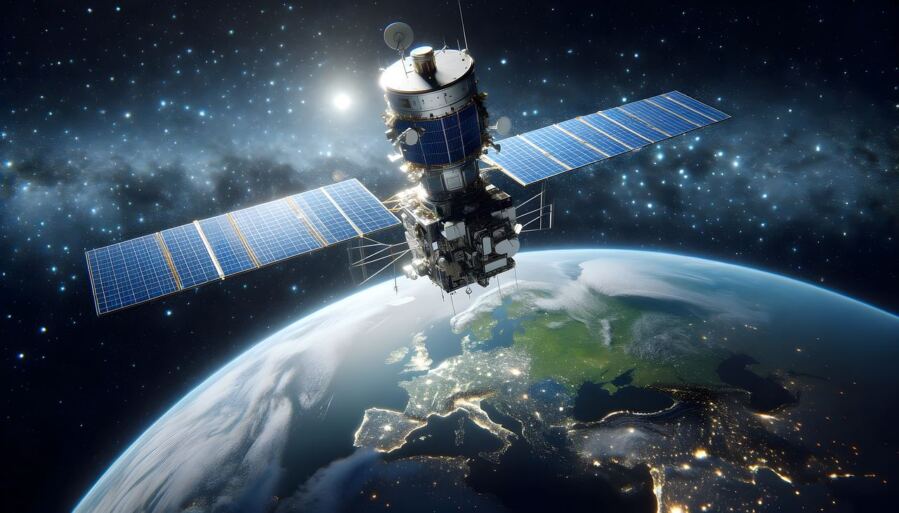The growing cloud of satellites orbiting Earth may do more than just clutter the night sky. New research suggests that the increasing frequency of satellite reentries could significantly impact our atmosphere, potentially altering stratospheric temperatures and affecting the ozone layer.
Scientists from the National Oceanic and Atmospheric Administration (NOAA) have published findings in the Journal of Geophysical Research that examine how aluminum oxide particles released during satellite reentry might accumulate in the atmosphere. Their models predict that by 2040, when satellite numbers could exceed 60,000, the mass of human-made materials entering our atmosphere could rival natural meteoric dust.
“This will lead to annual emissions of man-made material into the upper atmosphere on the same order of naturally occurring emissions from meteorites,” the researchers note in their study.
The research team, led by Christopher Maloney, simulated different reentry scenarios based on projected satellite population growth. They focused particularly on aluminum oxide, as aluminum comprises about 35% of typical satellite mass.
According to their findings, these particles wouldn’t simply disperse. Instead, they would accumulate in specific regions of the atmosphere, primarily at high latitudes between 10 and 30 kilometers above Earth’s surface. The simulation shows these particles could reach the altitudes containing our protective ozone layer within 1-3 years, depending on where satellites reenter.
While the direct warming effect from these particles is relatively small, the researchers found they could trigger temperature anomalies of up to 1.5 Kelvin in the middle atmosphere at high latitudes. Perhaps most surprisingly, these temperature changes could affect wind patterns in the polar vortex, potentially leading to a “weaker springtime ozone hole” in some scenarios.
The researchers tested five different reentry scenarios, including controlled reentries over specific regions and uncontrolled reentries from various orbits. One interesting finding was that polar reentries appeared to have less impact than equatorial ones, where particles spread more quickly throughout the atmosphere.
Dr. Karen Rosenlof, a co-author of the study, emphasized that this research represents only initial findings. “This initial modeling study is a first step in a process-based approach to understanding the potential climate impact from a projected increase in satellite reentry mass flux,” the researchers write.
The team acknowledges several limitations in their study. They haven’t yet modeled how these aluminum oxide particles might interact with stratospheric chemistry or how they might affect cloud formation if they eventually descend into the lower atmosphere.
As space becomes increasingly commercialized, with companies like SpaceX and others launching thousands of satellites, understanding these atmospheric effects becomes more urgent. The study projects that by 2040, annual satellite reentry emissions could reach 10,000 metric tons – conservative compared to some estimates.
“At present, impacts on the middle and the upper atmosphere are small, but have the potential to increase,” the researchers conclude, calling for expanded observations and modeling efforts to better understand how our growing space activity might be changing Earth’s protective envelope.
If our reporting has informed or inspired you, please consider making a donation. Every contribution, no matter the size, empowers us to continue delivering accurate, engaging, and trustworthy science and medical news. Independent journalism requires time, effort, and resources—your support ensures we can keep uncovering the stories that matter most to you.
Join us in making knowledge accessible and impactful. Thank you for standing with us!

